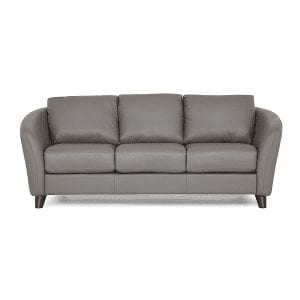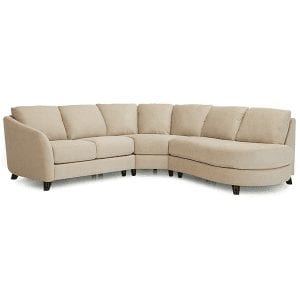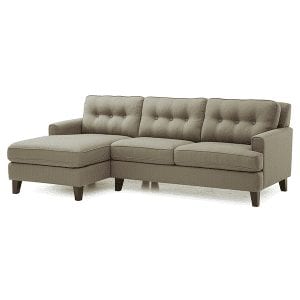Nothing says “welcome home” quite like the glow of your favorite lamp.
Lighting plays an essential role in any home decor.
It creates an inviting ambience for visitors. It lifts our spirits and boosts productivity. From doing homework to relaxing with a good book, the perfect lamp in the right spot is all you need to make your living room complete.
There’s lots to think about when shopping for lamps.
Of course, you need the right amount of brightness for illuminating your work. A layered design lets you adjust lighting levels for different moods – from energetic to intimate. You’ll also want a lamp size that fits your space and a style that blends with your furniture.
To help you out, we’ve put together five helpful hints for choosing living room lamps for your home.
#1: Assess Your Lighting Needs
Take some time to plan ahead before you go lamp shopping:
- How much natural lighting do you get from windows during the daytime?
- What about built-in fixtures? Do they provide enough light, or do you have a few shadowy spots that could use some brightening up?
- How much empty space do you have for lamps – on the floor, on your end tables or on that desk in the corner?
- Do you have enough light for working on the computer or reading a book? Or do you find yourself straining to see what you’re doing?
- Does your living room feel a bit dreary at times? A few more lamps could give you a more cheerful atmosphere.
#2: Plan a Layered Lighting Design
Most design experts recommend a layered lighting scheme. That means different sources of light play different roles in your decor.
- Ambient lighting provides general illumination throughout the room. This typically comes from built-in overhead lights such as recessed fixtures, chandeliers or pendant lights.
- Task lighting, as the name implies, directs light toward specific tasks such as working, reading, sewing or playing games.
- Accent lighting highlights individual features of your decor. Examples include lamps to illuminate paintings on the wall or figurines on a bookshelf.
#3: Know Your Types of Lamps
A layered lighting plan helps you choose your lamps strategically. Different types of lamps provide illumination and complement your decor in different areas within your living room.
Table Lamps
These give you soft light for reading, writing and watching your favorite shows. Place them on end tables to blend with your sofa, or to fill out a desk or console table. You can find table lamps in a wide variety of styles and materials. For example, a sleek metal lampstand looks fabulous in a contemporary living room. A graceful ceramic lamp will fit right in with traditional furnishings.
Floor Lamps
A stylish floor lamp is the perfect touch for perking up a dark, empty corner. You can also place it next to a recliner for reading or typing on your laptop. Floor lamps come in a range of styles and sizes. Choose a taller model to disperse light throughout the space, or eye-level for task lighting. A movable rod lets you place the light exactly where you need it. A tree lamp with multiple individual fixtures is great for adjusting brightness levels – turn on all the fixtures when you need lots of light or just a few for a cozy glow.
Task Lamps
As the name implies, task lamps are specifically designed for work settings. They often feature a clean, professional design and are a great choice for working at home or a study nook for the kids. Look for a bright bulb that lets you see your work comfortably to reduce eye strain.
#4: Complement Size & Layout
As with other decor items, measure your available space before buying a lamp.
For small spaces, go with a slender lamp stand instead of an oversized model, which may appear awkward. If you have a large living room, a small lamp that leaves too much empty space will look out of place.
Floor lamps should comfortably fill available floor space without blocking any walkways. Choose a taller lamp for illuminating a dark corner and a shorter model next to your favorite reading chair. An upturned lamp shade will disperse light throughout the room, while a traditional downturned shade focuses light on a specific area.
Table lamps should leave enough space for drinks, books, electronic devices or other items that need to go on the table. The height of the lamp when placed on the table should be no more than eye level.
#5: Blend with Your Decor
Look for lamps that match your overall design scheme, just like you do when purchasing other furnishings. For example, cool, white lights add energy to contemporary living rooms. Warm, yellow lights give your space a cozy, retro vibe.
You also want features that let you adjust the amount of light for different occasions. Dimmers give you the flexibility to switch between ambient and task lighting. A three-way switch lets you adjust intensity – choose a brighter setting for reading and a softer glow when it’s time to simply relax.
Do your lamps need to match? In most traditional designs, a matching set of table lamps on either end of the sofa is the perfect touch. On the other hand, different designs in a complementary style can create an appealing visual interest.
Whether you need a brand new living room set or a few new items to freshen up your decor, stop by Lifestyles Furniture. Our showroom features a wide assortment of quality, customizable furnishings from reputable manufacturers.
Give us a call at 573-874-1550 or contact us online today!



